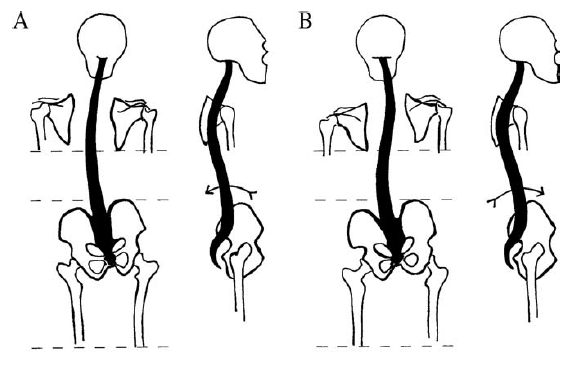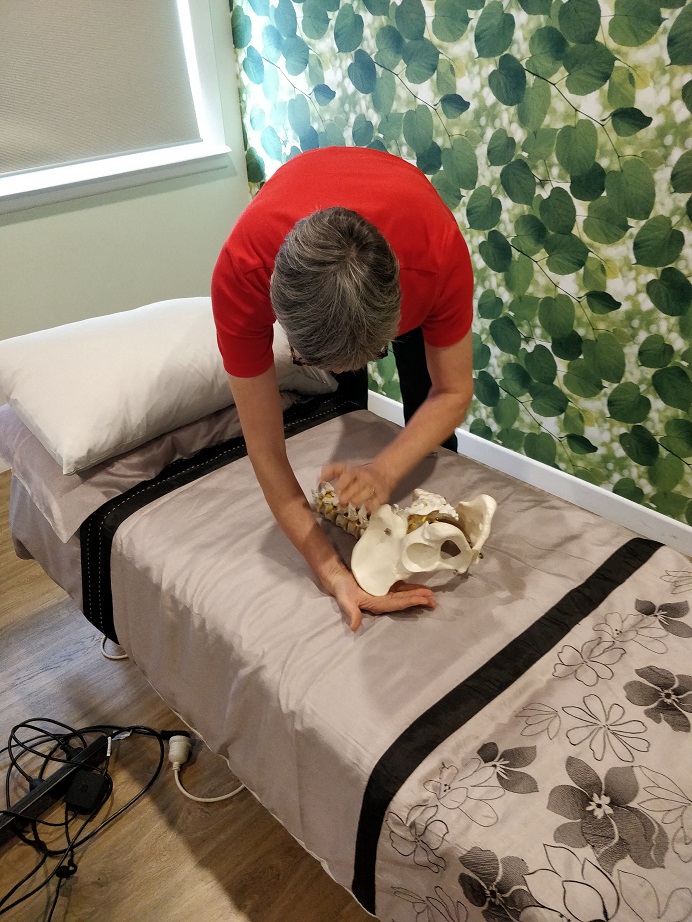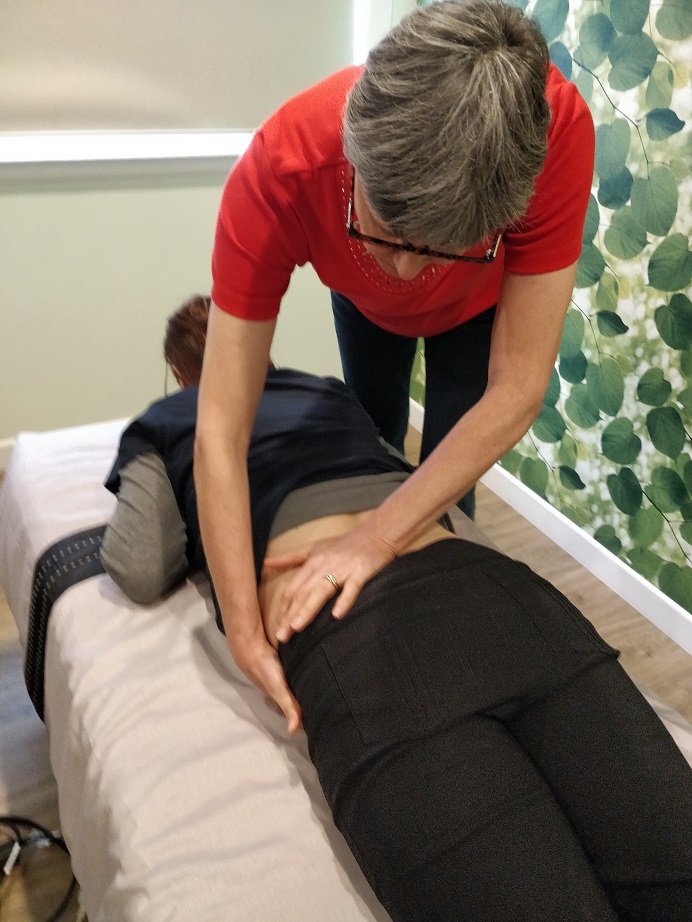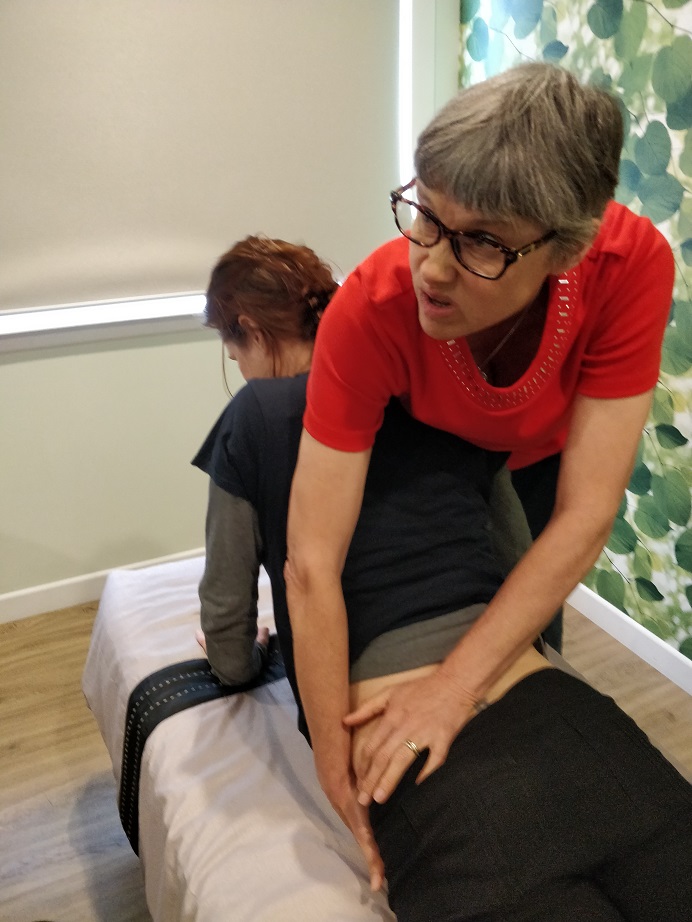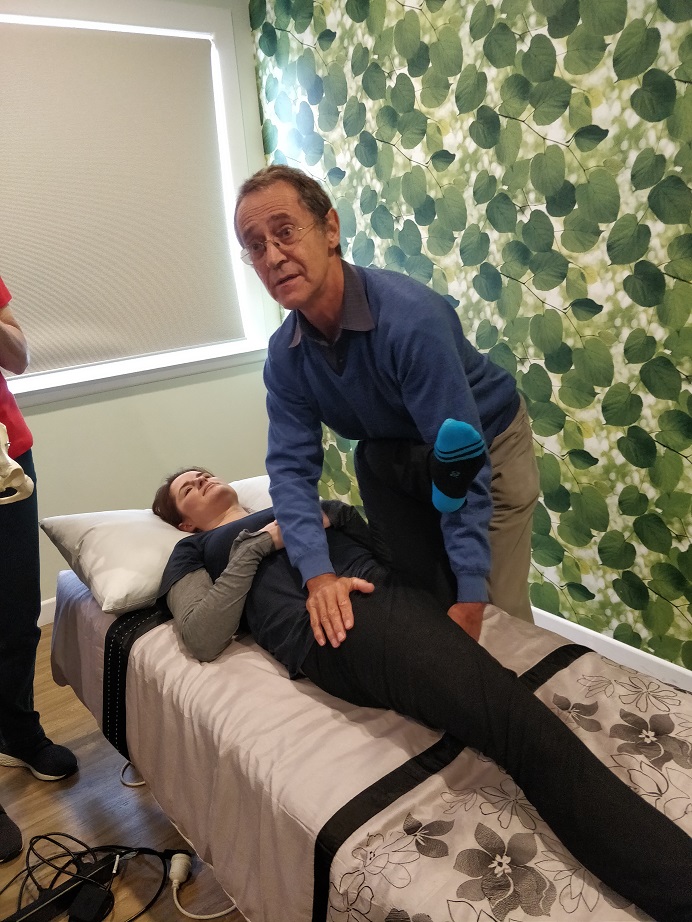Sacroiliac Joint Pain: Difference between revisions
| Line 40: | Line 40: | ||
===Mulligan Techniques=== | ===Mulligan Techniques=== | ||
The most common malalignment is anterior rotation. This can usually be easily corrected with a mobilisation with movement technique. The sacrum is stabilised, the innominate is rotated, while the patient extends in lying. | The most common malalignment is anterior rotation. This can usually be easily corrected with a mobilisation with movement technique called anterior innominate extension in lying mobilisation with movement. The sacrum is stabilised, the innominate is rotated and glided posteriorly, while the patient extends in lying. Ensure mobilisation is a combination of glide +/- rotation of the innominate with opposing forces on the sacrum. | ||
[[File:Anterior Innominate Extension in Lying MWM 1.jpg]] | [[File:Anterior Innominate Extension in Lying MWM 1.jpg]] | ||
| Line 46: | Line 46: | ||
[[File:Anterior Innominate Extension in Lying MWM 3.jpg]] | [[File:Anterior Innominate Extension in Lying MWM 3.jpg]] | ||
Videos of various techniques are below | |||
[[Media: | * [[Media:Anterior_Innominate_Extension_in_Lying_MWM.mp4|Anterior Innominate Side Bending in Lying]] | ||
[[Media: | * [[Media:Posterior_Innominate_Extension_in_Lying_MWM.mp4|Posterior Innominate Extension in Lying]] | ||
[[Media:Posterior_Innominate_Side_Bending_in_Standing_MWM.mp4|Posterior Innominate Side Bending in Standing]] | * [[Media:Anterior_Innominate_Flexion_in_Standing_MWM.mp4|Anterior Innominate Flexion in Standing]] | ||
* [[Media:Posterior_Innominate_Side_Bending_in_Standing_MWM.mp4|Posterior Innominate Side Bending in Standing]] | |||
===Muscle Energy Techniques=== | ===Muscle Energy Techniques=== | ||
Revision as of 10:55, 14 June 2020
Pelvic Malalignment
The chart below is from Timgren et al, and outlines the changes seen on examination with pelvic malalignment.[1]
| Innominate | A. Posterior rotation | B. Anterior Rotation |
|---|---|---|
| Iliac Crest | Elevated ↑ | Elevated ↑ |
| ASIS | Elevated ↑ | Depressed ↓ |
| PSIS | Depressed ↓ | Elevated ↑ |
| scapula | Depressed ↓ | Elevated ↑ |
| leg | Longer ↑ | Shorter ↓ |
| 10-15mm lift | Increased crest difference ↑ | Reduced crest difference ↓ |
| Spinal curvature | C type scoliosis | S type scoliosis |
| C0-C1 function | Symmetric rotation in flexion | Restricted rotation in flexion |
All changes are in reference the ipsilateral side.
Rising of the crest upon anterior SI rotation is paradoxical, and its explanation cannot be reduced to a two-dimensional model.
Schamberger’s rule of the five Ls, which relates to the side of the anteriorly rotated innominate: “Leg Lengthens Lying, Landmarks Lower” (supine vs long sitting) [2]
Those patients showing pelvic asymmetry caused by dysfunction of the SI joint received one of two treatment options: (1) high-velocity and low-amplitude thrust technique applied through the ankle on the side of the dysfunctional SI joint or (2) restoration of symmetry by the selfembracing muscle energy technique. In this procedure, a patient resists thigh extension, alternating on both sides, to produce a corrective rotational force on the pelvis. Both methods have been described in detail elsewhere.3,12 The estimation of asymmetry as described was repeated after the corrective treatment.
Manual Therapy
Alignment can be reacquired through various means such as muscle energy techniques, and mobilisation with movement.
Mulligan Techniques
The most common malalignment is anterior rotation. This can usually be easily corrected with a mobilisation with movement technique called anterior innominate extension in lying mobilisation with movement. The sacrum is stabilised, the innominate is rotated and glided posteriorly, while the patient extends in lying. Ensure mobilisation is a combination of glide +/- rotation of the innominate with opposing forces on the sacrum.
Videos of various techniques are below
